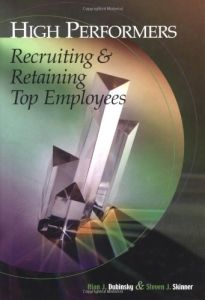Join getAbstract to access the summary!

Join getAbstract to access the summary!
Alan J. Dubinsky and Steven J. Skinner
High Performers
Recruiting & Retaining Top Employees
Thomson Texere, 2003
What's inside?
Thirteen key drivers make employees high performers: you can recruit, train, encourage and profit from these motivators.
Recommendation
This is a very short book and most of what authors Alan J. Dubinsky and Steven J. Skinner have to say seems like straight, plain common sense. That is so rare in books about human resource management that this seems like a small gem. Most of its content consists of vignettes of high-performing employees who go out of their way to serve customers. But the authors have arranged their material well as they discuss boosting employees who do good work in lower-level management or staff positions. Each chapter covers a trait that motivates top performers and includes succinct tips for managers. The authors also outline, on a matrix, the relationship between performance motivation and managerial initiatives. While you can easily read this book in less than an hour, putting its recommendations into effect will be the work of an organizational lifetime. getAbstract.com believes it will be work well rewarded.
Summary
About the Authors
Alan J. Dubinsky is the author of three books and a professor of selling and sales management at Purdue University. Steven J. Skinner is Rosenthal Professor of Marketing at the Gatton College of Business and Economics at the University of Kentucky. He is the author of Marketing, Second Edition, a college textbook, and the co-author of Management: Quality and Competitiveness, Business for the 21st Century and The New Banker: Developing Leadership in a Dynamic Era.

















Comment on this summary